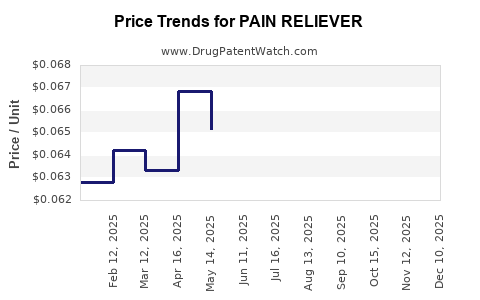Drug Price Trends for PAIN RELIEVER
✉ Email this page to a colleague

Average Pharmacy Cost for PAIN RELIEVER
| Drug Name | NDC | Price/Unit ($) | Unit | Date |
|---|---|---|---|---|
| PAIN RELIEVER PLS 250-250-65 MG | 00536-1326-01 | 0.06295 | EACH | 2024-11-20 |
| PAIN RELIEVER PLS 250-250-65 MG | 00536-1326-01 | 0.06531 | EACH | 2024-10-23 |
| PAIN RELIEVER PLS 250-250-65 MG | 00536-1326-01 | 0.06200 | EACH | 2024-09-18 |
| PAIN RELIEVER PLS 250-250-65 MG | 00536-1326-01 | 0.06979 | EACH | 2024-08-21 |
| PAIN RELIEVER PLS 250-250-65 MG | 00536-1326-01 | 0.06504 | EACH | 2024-07-17 |
| >Drug Name | >NDC | >Price/Unit ($) | >Unit | >Date |


